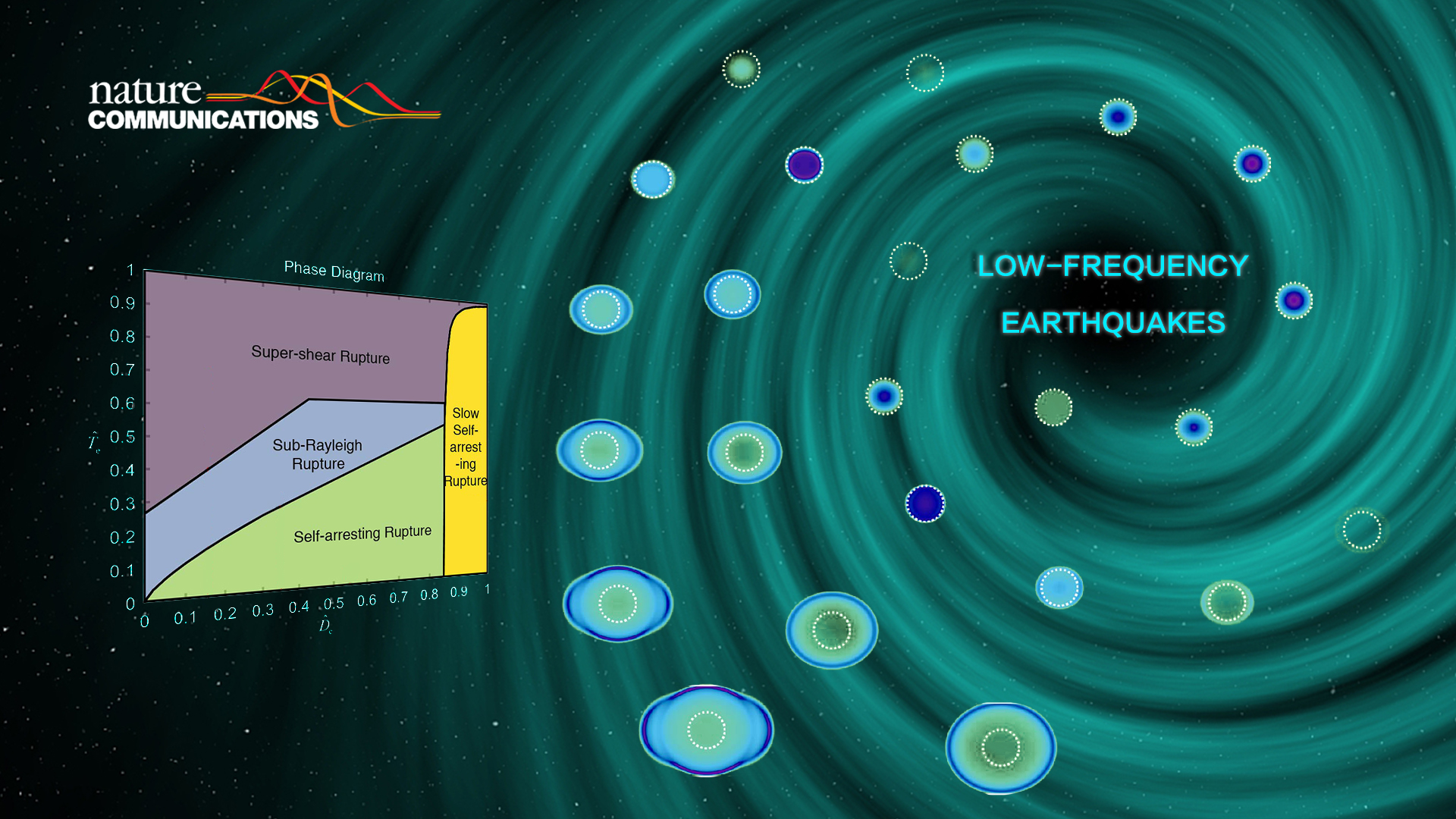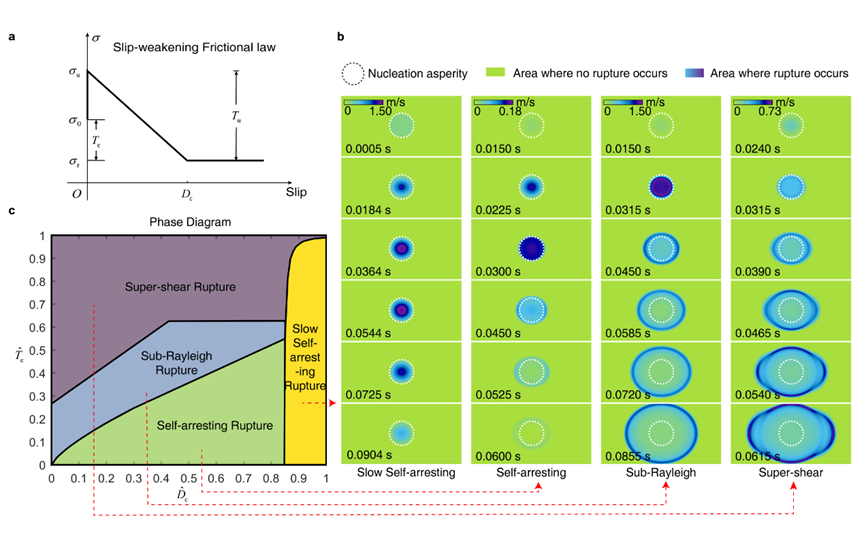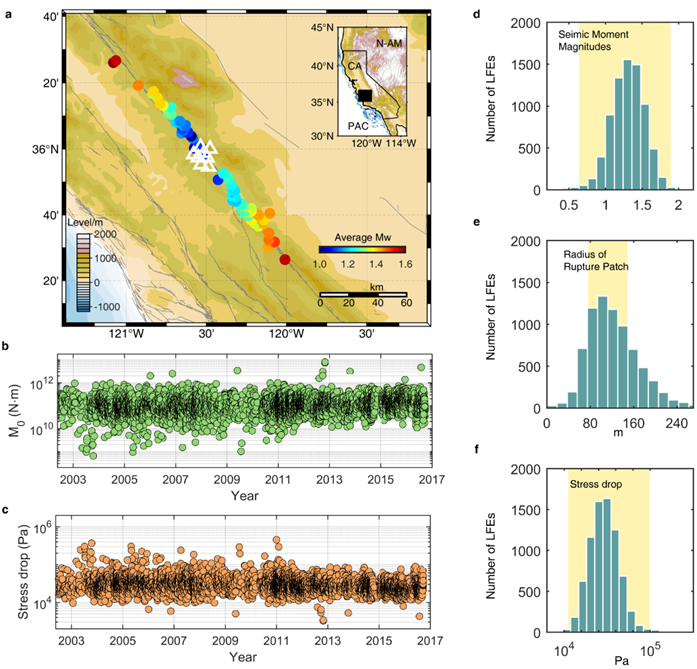Recently, the research team of Professor Xiaofei Chen from the Department of Earth and Space Sciences at the Southern University of Science and Technology (SUSTech) made progress in the study of the source process of low-frequency earthquakes (LFEs). The results were published in Nature Communications, entitled “The slow self-arresting nature of low-frequency earthquakes.”

LFEs are a series of recurring small earthquakes that mainly occur in subduction zones. Unlike typical earthquakes, LFEs generate a weak seismic signal and have a low signal-to-noise ratio. Their main frequencies are significantly lower than typical earthquakes of the same magnitude, so they are called low-frequency. Moreover, compared with typical earthquakes of the same magnitude, the stress drops and slip rates of LFEs are two to three orders of magnitude smaller than those of common earthquakes. It implies that the focal process of LFEs is somewhat different from typical earthquakes. So, what makes LFEs have these distinct characteristics from common earthquakes? What exactly is the source process of a low-frequency earthquake? Solving these problems seems to be the key to understanding slow earthquakes such as LFEs.
A very effective method for studying the source process of an earthquake is to perform source dynamics simulation. For many years, the research team has been engaged in theoretical research on seismic source dynamics and put forward the “phase diagram of rupture dynamics” concept. According to the “phase diagram” theory, under different frictional conditions, earthquakes can be divided into four different rupture modes: supershear earthquakes, subshear earthquakes (typical earthquakes), self-arresting earthquakes, and slow self-arresting earthquakes. Among them, supershear earthquakes and subshear earthquakes can only stop when they encounter obstacles. At the same time, self-arresting earthquakes and slow self-arresting earthquakes will also arrest spontaneously without any obstacles. The slow self-arresting earthquake will stop spontaneously in the nucleation zone after the rupture occurs, with its main frequency low and stress drop small. These characteristics coincide with the features of the source parameters of LFEs.
To verify the relationship between slow self-arresting earthquakes and LFEs, the research team calculated the source parameters of LFEs in the Parkfield area of California, USA, and compared the observation results with the simulated earthquakes source parameters. The comparison results show that for the above four seismic modes, only the source parameters obtained from the slow self-arresting earthquakes are consistent with the characteristics of the source parameters of LFEs. The research team further found that the slow self-arresting earthquakes release less energy during the rupture process, and the external shear stress required to trigger slow self-arresting earthquakes is also low.

Figure 1. The phase diagram of rupture dynamic and four types of rupture modes. (a) Slip-weakening frictional law; σu, σo, and σr are the peak strength, initial stress, and residual stress, respectively. Tu is the breakdown stress drop, Te is the dynamic stress drop. (b) Four types of rupture modes. The simulated strike-slip faults are shown as the green background area, and the white dashed lines enclose the nucleation asperity. All four types of rupture are under the same initial stress state. (c) The rupture phase diagram in parameter spaces (Dc, Ra, Te, Tu) for four different combinations of friction parameters.
These findings are consistent with the observed LFEs. On a large scale, the magnitude-source duration relationship followed by slow earthquakes is also consistent with the magnitude-source duration relationship of the simulated slow self-arresting earthquakes. Combining these proofs, the team proposed that the slow self-arresting earthquake source model can explain the source process of LFEs.

Figure 2. Parkfield LFEs. (a) Map of the Parkfield, California area, HRSN borehole stations, and associated topography. LFEs identified by Shelly10 are shown as circles, and the HRSN borehole stations are shown as white triangles. Different colored circles represent different average moment magnitudes of LFEs. (b) Seismic moment magnitudes of LFEs in Parkfield (green dots). (c) Stress drop magnitudes of LFEs in Parkfield (orange dots). (d) Histogram of estimated LFE moment magnitudes. The yellow strips show the source parameters range used in comparison with the simulated results. (e) Histogram of estimated radii of rupture patches of LFEs. (f) Histogram of estimated stress drops of LFEs.
Furthermore, the research team proposed the generation mechanism of LFEs. Firstly, the area where low-frequency earthquakes occur may contain water, resulting in different friction conditions from ordinary earthquakes. Secondly, a slight stress interference is generated from the outside, and LFEs begin to occur. Common earthquakes will not happen because the applied stress required to induce them to occur is much larger. Lastly, the stress released by LFEs is slight, so it can rupture again under the interference of the following stress disturbance to form a constantly recurring tremor signal.

Figure 3. Source characteristics comparison between simulated ruptures and LFEs in Parkfield. The duration, slip, slip rate, stress drop, and seismic moment magnitudes are compared. Pink strips denote the estimated source parameters ranges for LFEs in Parkfield, and the colored dots show the results of numerically simulated earthquakes. Different dot colors represent different simulated rupture patch diameters, while different dot shapes show different types of ruptures in simulations. The blue, green, orange, and yellow dots denote simulated earthquakes with rupture diameters 300 m, 260 m, 220 m, and 180 m, respectively. The circles, diamonds, and stars represent the sub-Rayleigh earthquakes, self-arresting earthquakes, and slow self-arresting earthquakes, respectively. In addition, the red dashed rectangles show the ranges where the source parameters of simulated earthquakes match those of LFEs.
This study reveals the source physical model of LFEs. It shows that LFEs and common earthquakes are different seismic modes obtained under other frictional conditions. The phase diagram of rupture dynamics can explain these different seismic modes. This work unified LFEs into the seismic phase diagram framework.
The first author of the paper is Xueting Wei, a student from the Department of Earth and Space Sciences at SUSTech. Professor Xiaofei Chen at SUSTech is the corresponding author.
This research was supported by the National Natural Science Foundation of China (NSFC), Key Special Project for Introduced Talents Team of Southern Marine Science and Engineering Guangdong Laboratory, Shenzhen Science and Technology Program, and the Shenzhen Key Laboratory of Deep Offshore Oil and Gas Exploration Technology.
Paper Link: https://www.nature.com/articles/s41467-021-25823-w
To read all stories about SUSTech science, subscribe to the monthly SUSTech Newsletter.
Proofread ByAdrian Cremin, Yingying XIA
Photo By